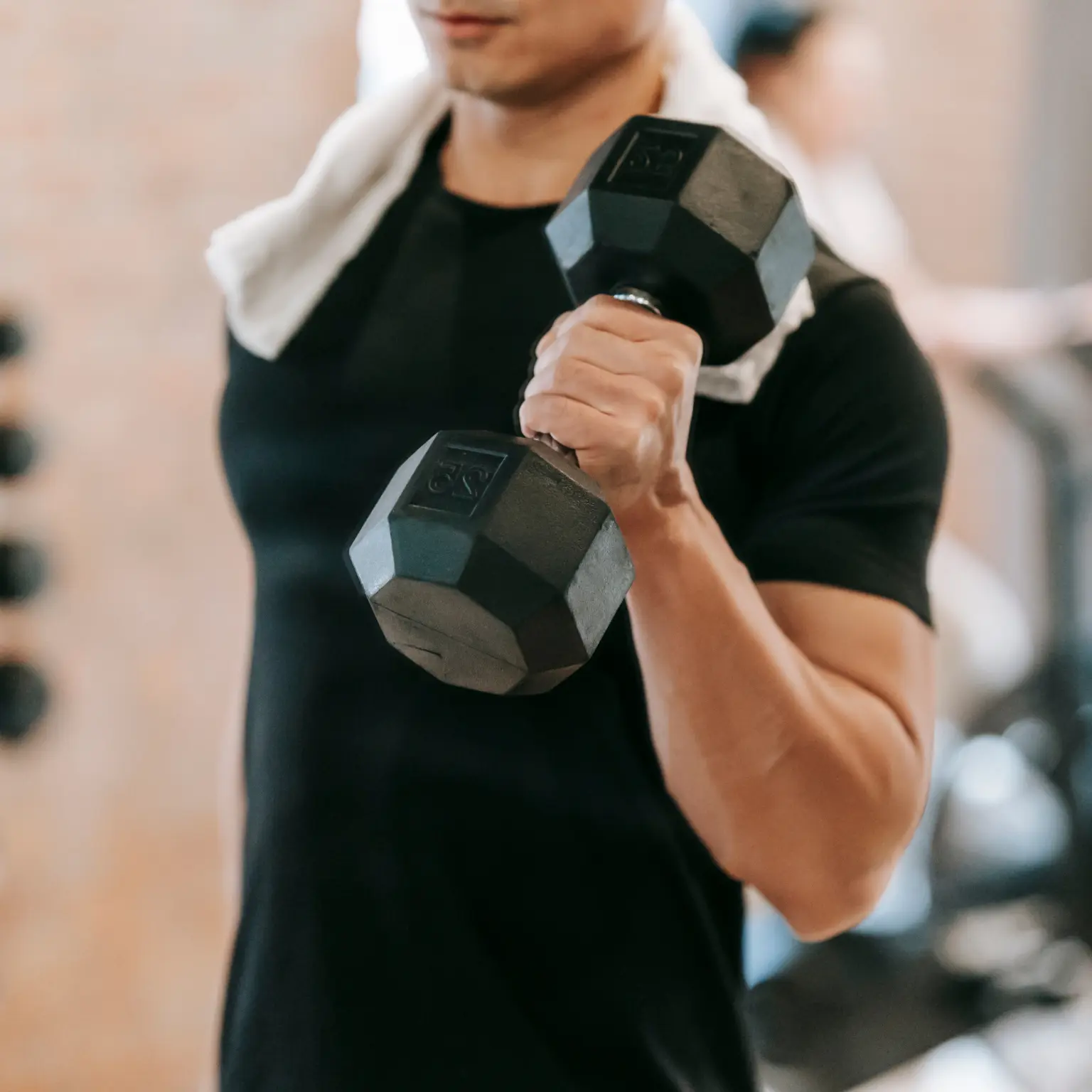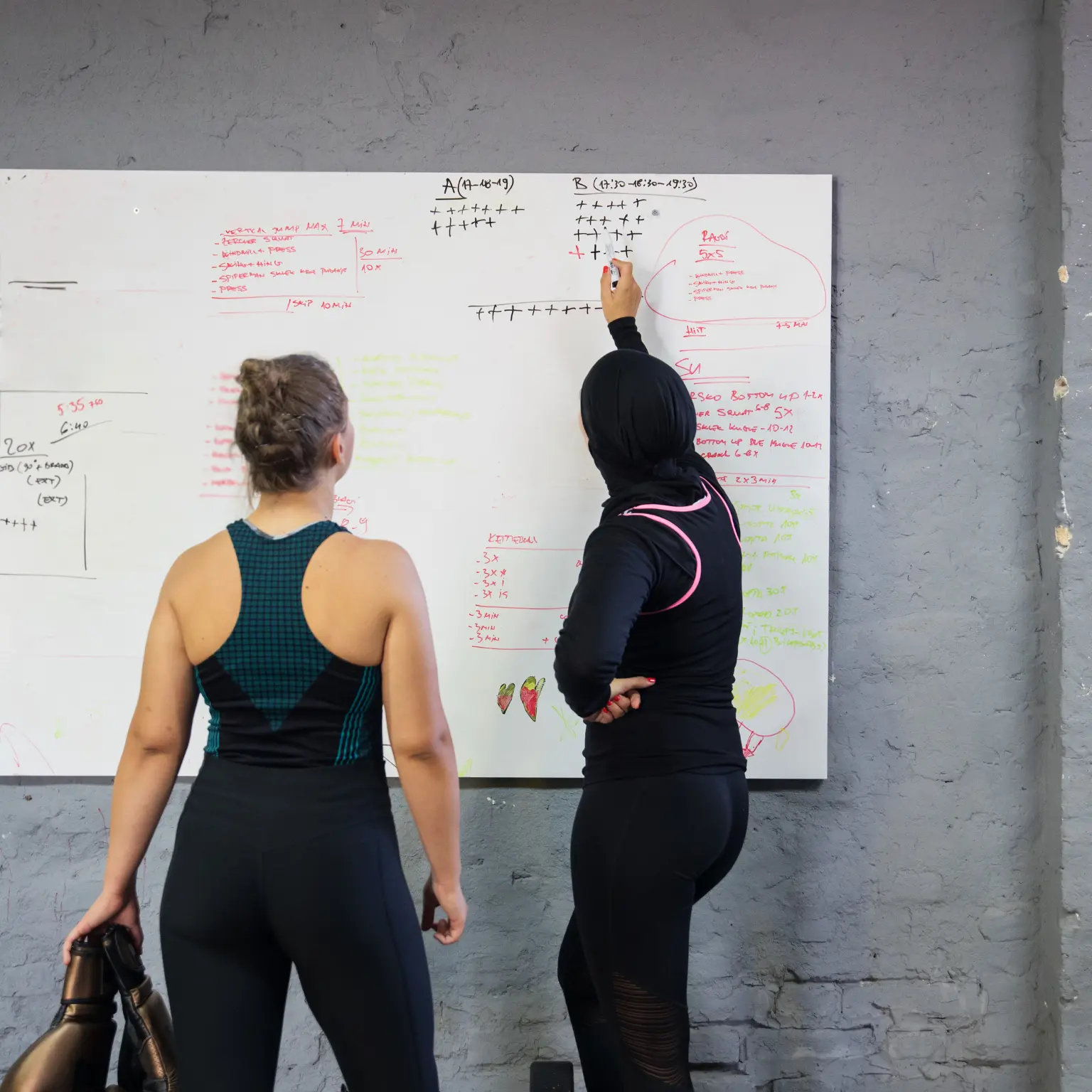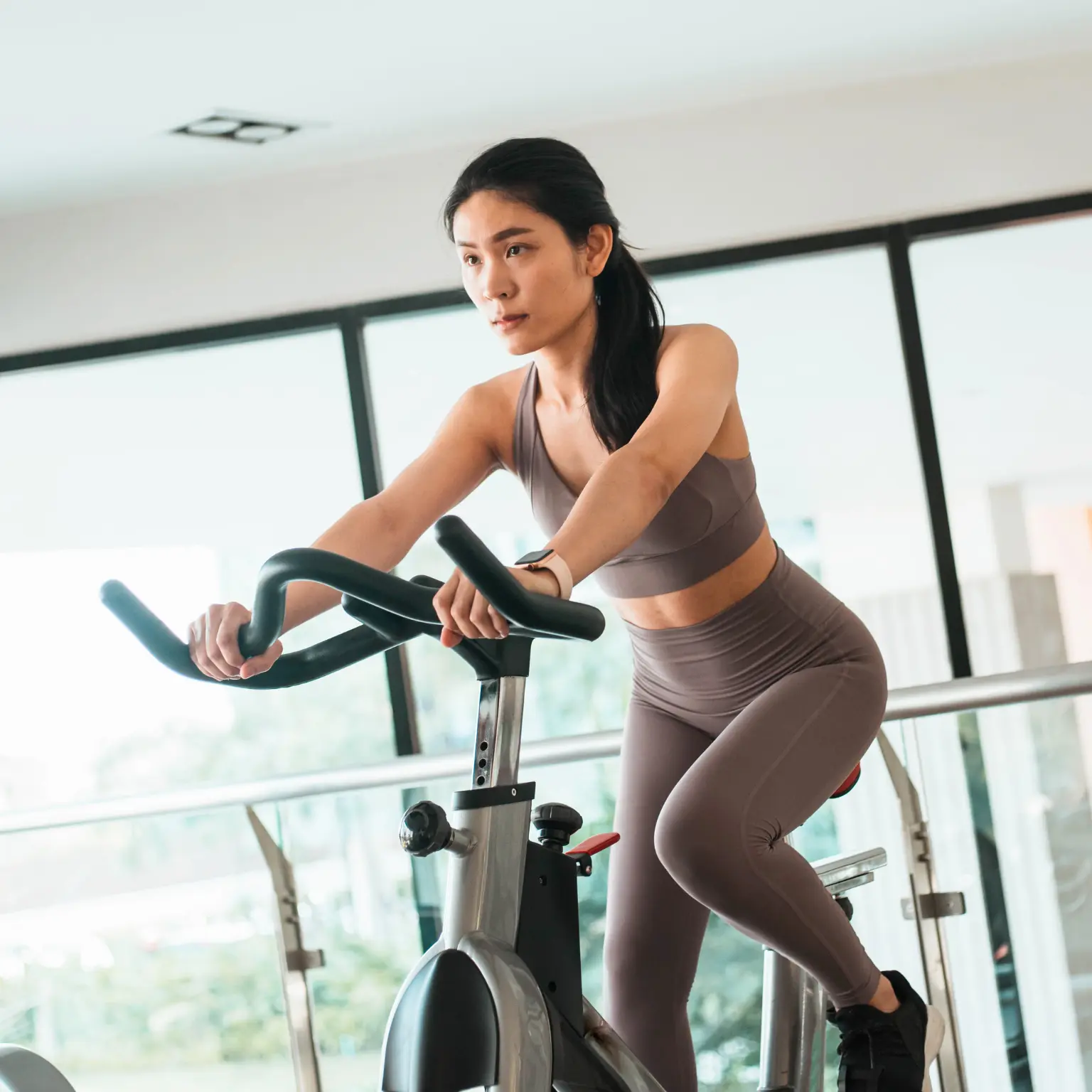10 Essential Dumbbell Workouts to Build Muscle Fast

Many fitness enthusiasts share the common goal of building muscle. It not only improves your physique but also enhances strength, boosts metabolism, and increases bone density. While gyms offer a wide range of equipment, dumbbells provide a convenient and versatile option for effective muscle-building workouts at home or anywhere you choose.
This guide from Healthy Stride Wellness presents 10 essential dumbbell exercises designed to target major muscle groups and stimulate muscle growth. These exercises are easy to learn, require minimal equipment, and can be adapted to different fitness levels.
Table of Contents
Key Takeaways
- Dumbbells provide a convenient and effective way to build muscle at home or on the go.
- This guide outlines 10 essential dumbbell exercises targeting major muscle groups for comprehensive muscle development.
- Each exercise includes detailed instructions, modifications for beginners and advanced exercisers, and additional tips for maximising results.
Unlocking Muscle Growth with Dumbbells
Before diving into the exercises, let’s address a crucial question: how do dumbbells help you build muscle? Here’s the science behind it:
- Progressive Overload: Muscle growth occurs when challenged beyond their current capacity. Dumbbells allow you to gradually increase weight, progressively overloading your muscles and stimulating growth.
- Compound Movements: Many dumbbell exercises engage multiple muscle groups simultaneously, maximizing muscle engagement and promoting overall development.
- Increased Strength and Stability: Dumbbell exercises not only build muscle but also improve strength and stability in your core and joints, leading to better performance in all aspects of fitness.
The 10 Essential Dumbbell Workouts
Now, grab your dumbbells and get ready to sculpt your physique!
1. Dumbbell Shoulder Press
Benefits: Targets your shoulders, specifically the deltoids, for increased strength and definition.
Instructions:
- Stand with your feet shoulder-width apart and core-engaged.
- Hold dumbbells at shoulder height with palms facing forward.
- Lift the dumbbells up above your head until your arms are totally straight.
- Then, bring the dumbbells down slowly to the level of your shoulders.
Modification: Beginners can start with lighter weights or perform a seated dumbbell shoulder press for added stability.
Tip: Maintain a slight arch in your lower back throughout the movement and keep your core engaged. Don’t swing the dumbbells to lift them.
2. Dumbbell Row
Benefits: Strengthens your back muscles, including the lats, traps, and rhomboids, for improved posture and pulling power.
Instructions:
- Stand with your feet hip-width apart and hold dumbbells in each hand, palms facing your body.
- Hinge at your hips and lower your torso, keeping your back straight.
- Row the dumbbells towards your sides, squeezing your shoulder blades together at the top.
- Lower the dumbbells back down with control, maintaining a straight back.
Modification: Beginners can perform dumbbell rows while seated on a bench for added support.
Tip: Keep your core engaged and avoid arching your back during the movement. Focus on squeezing your back muscles rather than using your arms to lift the weight.
3. Dumbbell Bench Press
Benefits: Targets your chest muscles, specifically the pectorals, for increased size and strength.
Instructions:
- Lie on a flat bench with your feet flat on the floor and back supported.
- Hold dumbbells with an overhand grip, arms extended towards the ceiling.
- Position yourself with your feet apart at shoulder-width, and grasp the dumbbells with an underhand grip.
- Pause at the bottom, then press the dumbbell back up to the starting position.
Modification: Beginners can start with lighter weights or perform an incline dumbbell bench press for a variation.
Tip: Engage your core to stabilize your body during the movement. Lower the dumbbells slowly and controlled to maximize muscle engagement.
4. Dumbbell Bicep Curls
Benefits: Targets your biceps for increased arm strength and definition.
Instructions:
- Position yourself by standing with your feet apart, about the width of your shoulders. Hold dumbbells in your hands with a grip where your palms are facing upwards.
- Keep your upper arms stationary by your sides and curl the dumbbells towards your shoulders.
- Lower the dumbbells slowly and steadily to the original position.
Modification: Beginners can start with lighter weights or perform seated bicep curls for added stability.
Tip: Focus on contracting your biceps at the top of the movement. Make sure not to swing your arms or rely on momentum when lifting the weights.
5. Dumbbell Triceps Extensions
Benefits: Targets your triceps for increased arm strength and definition.
Instructions:
- Stand with your feet shoulder-width apart, holding a dumbbell in both hands behind your head.
- Keep your upper arms close to your head and lower the dumbbell behind your head until your elbows are fully extended.
- Lift the dumbbell back to where you began.
Modification: Beginners can start with lighter weights or perform triceps extensions while seated on a bench for added support.
Tip: Focus on isolating your triceps by avoiding swinging your arms. Lower the dumbbell slowly and controlled to maximize muscle engagement.
6. Dumbbell Lunges
Benefits: Targets your legs, glutes, and core for increased lower body strength and balance.
Instructions:
- Position your feet hip-width apart, and keep dumbbells by your side.
- Take a step forward with one leg, bending both knees until they form a right angle.
- Return to the initial stance, then alternate with the opposite leg.
Modification: Beginners can start with shorter lunges or hold onto a wall for balance.
Tip: Keep your upper body upright and your core engaged. Remember, it’s important to avoid letting your front knee extend over your toes.
7. Dumbbell Rows
Benefits: Targets your back muscles, including the lats, rhomboids, and traps, for improved posture and strength.
Instructions:
- Hinge forward at your hips, keeping your back flat, and hold dumbbells in each hand.
- Row the dumbbells towards your sides, squeezing your shoulder blades together at the top.
- Lower the dumbbells back down with control.
Modification: Beginners can start with lighter weights or perform dumbbell rows while kneeling on a bench for added support.
Tip: Keep your back straight and use your core muscles as you perform the exercise. Concentrate on contracting your back muscles when you reach the highest point of the row.
8. Dumbbell Overhead Press
Benefits: Targets your shoulders, specifically the deltoids, for increased strength and definition.
Instructions:
- Stand with your feet apart, about the width of your shoulders.
- Hold dumbbells at shoulder height.
- Extend your arms upwards until they are fully straight while holding the dumbbells. Bring the dumbbells back down to shoulder level steadily.
Modification: Beginners can start with lighter weights or perform seated overhead presses for added stability.
9. Dumbbell Squats
Benefits: Targets your legs, glutes, and core for increased lower body strength and power.
Instructions:
- Stand with your feet about shoulder-width apart while keeping dumbbells by your sides.
- Lower your body into a squat position, as if sitting back into a chair.
- Make sure to maintain a straight back and keep your knees in line with your toes.
- When you’re ready to go back to the initial stance, push up from your heels.
Modification: Beginners can start with lighter weights or perform bodyweight squats first to build strength.
Tip: Engage your core throughout the movement to maintain balance. Focus on lowering your hips as deep as possible without compromising form.
10. Dumbbell Deadlifts
Benefits: Targets your hamstrings, glutes, and lower back for increased strength and power.
Instructions:
- Position your feet hip-width apart, and grasp dumbbells in front of your thighs.
- Bend forward at your hips, lowering the dumbbells towards the floor.
- Ensure your back stays flat and keep your core muscles engaged during this action.
- Push up through your heels to get back to the initial stance.
Modification: Beginners can start with lighter weights or perform deadlifts with one leg at a time for added balance.
Tip: Focus on engaging your hamstrings and glutes to lift the weight. Avoid rounding your back or swinging the dumbbells.
In Summary
Incorporating these 10 dumbbell exercises into your workout routine can help you build muscle, increase strength, and improve overall fitness. Remember to listen to your body, gradually increase the weight as you get stronger, and maintain proper form to prevent injuries.
Healthy Stride Wellness believes in the power of dumbbells to transform your physique and achieve your fitness goals. Start your muscle-building journey today!
Ready to sculpt your dream body? Explore our other articles on workout plans, nutrition, and expert fitness tips to complement your dumbbell workouts. Visit our website at Healthy Stride Wellness for more inspiration and guidance.
FAQ’S
How often should I do this dumbbell workout routine?
For optimal muscle growth, aim for 3-4 workouts per week. Ensure you allow at least one day of rest between sessions for muscle recovery.
Can I see results with just dumbbell workouts?
Absolutely! Dumbbells offer a versatile way to target major muscle groups. Consistent workouts, proper form, and a balanced diet will help you achieve your muscle-building goals.
How do I know if I’m lifting the right weight?
Choose a weight that challenges you but allows you to maintain proper form for 12-15 repetitions. As you get stronger, gradually increase the weight to continue stimulating muscle growth.
Is it necessary to have a workout partner?
While a workout partner can provide motivation and support, it’s not essential. You can effectively perform these dumbbell workouts independently.
Can I combine this workout with cardio?
Definitely! Incorporating cardio exercises into your routine can help burn fat and improve overall fitness. Try to get in about 150 minutes of moderate-intensity cardio each week.
Please Note: Healthy Stride Wellness provides educational content and is not a replacement for medical advice. Consult a healthcare provider for any health issues.




